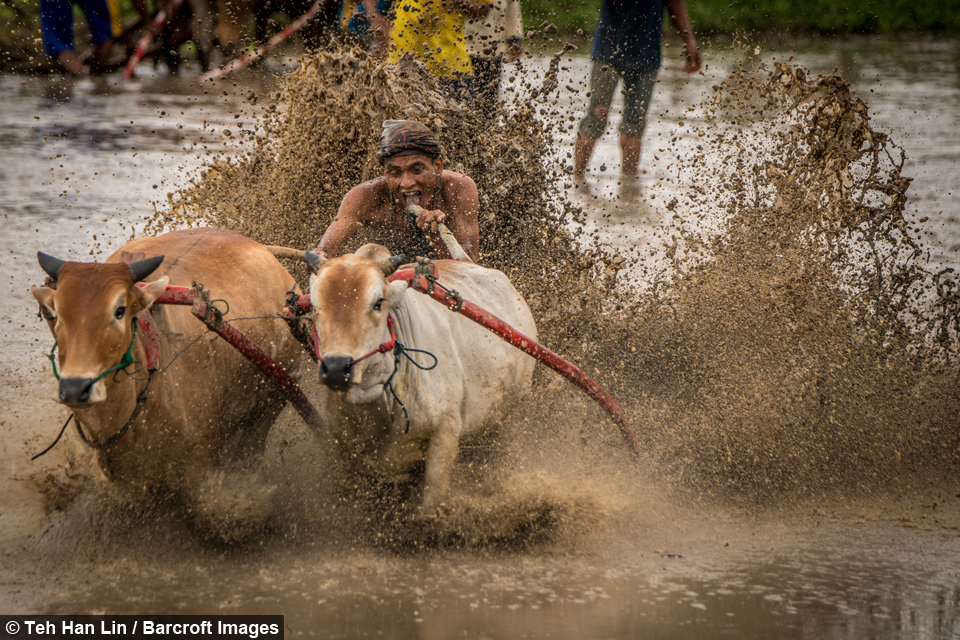Cash cow: Farmers compete in traditional plough race
By Bunmi Adigun @Bunmi_Adigun
Scroll down for the full story
Known as Pacu Jawi the traditional cow race takes place in Padang, West Sumatra, and has become the highlight of the year for locals.
Every year before the rice planting season farmers from all over the district compete in the muddy event with the fastest cows fetching a high price from onlooking potential buyers.
The race was captured by photographer and cyber security expert, Teh Han Lin on a recent visit to Indonesia.
He said: “The cow racing festival was created more than 400 years ago as a way to celebrate the end of rice harvesting season by the Minangkabau people in West Sumatra, Indonesia.
"While the race has become part of Indonesian culture, the main purpose of the Pacu Jawi is for sellers to exhibit the strength of their cows to the potential buyers and competitors.”
With precious little to protect themselves the jockeys have to balance on a thin wooden frame that goes around the charging cows, all the while ensuring that they don’t fall off by using its tail as a rein.
Participants use two cows during the races, which are not connected by any equipment, making the jockey’s job more difficult as he has to make sure that they don’t run off in opposite directions.
The winners of the races win bragging rights in their local community but more importantly they can also charge a higher price for their livestock, with some of the fastest cows going for thousands of dollars.
Teh said: “The prize is not the main purpose, the prize given by the committee is not much. Becoming a winner can lead to generating a higher price for those farmers that plan to sell their breeding stock. A regular cow that’s bred for daily consumption costs about S$500 – S$700, but a Pacu Jawi racing cow can cost at least twice the regular cow.
He added: “There are even racing cows that can cost up to US$2000 to US$3000.”
Describing what he felt after watching the races, Teh said: “I was very excited to see how the jockey, without safety or protection, managed to stay in control and balanced on the thin wooden frame attached to the cows and held on tight to the cow's tail trying to keep them in a straight line. This needed a lot of balance skill and experience.”
Although health and safety during the races leaves a lot to be desired, the rate of injury during the mud filled event is surprisingly low.
Teh added: “Accidents involving the jockey so far has never happened or is very rare, as all the rice fields are used as an arena runway which is about 60 metres wide, and the field is also smoothed to prevent accidents.”








